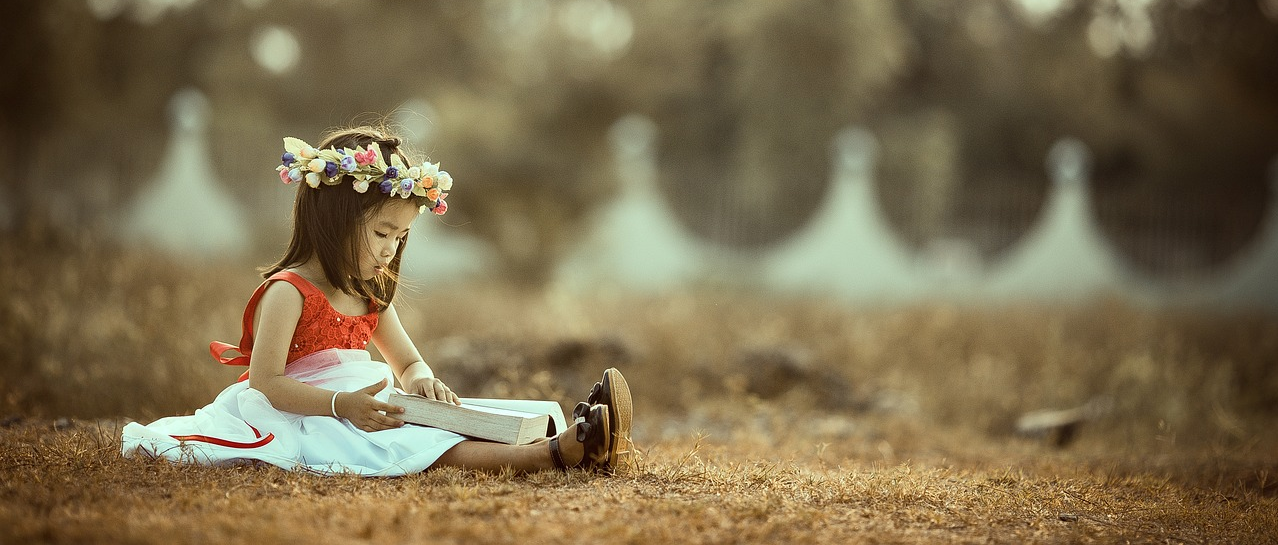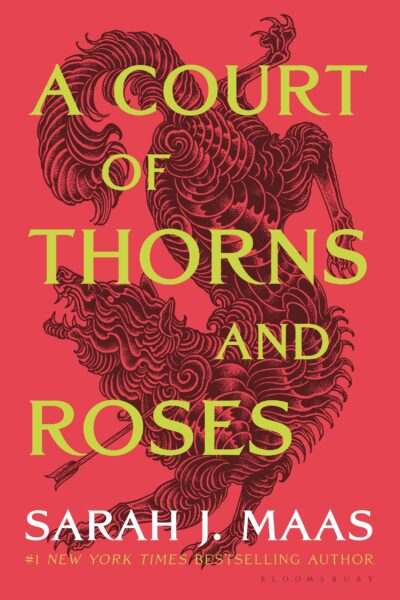A Court of Thorns and Roses
Chapter 45
by Maas, Sarah J.The chapter opens with a surreal perspective as the narrator witnesses events through another’s eyes—later revealed to be Rhysand’s. Amarantha stands shocked as the narrator’s lifeless body lies nearby, its neck twisted unnaturally. Lucien, overcome with grief, removes his fox mask to reveal his scarred yet handsome face. Tamlin, witnessing the narrator’s death, transforms into a beastly rage, his fangs bared as golden light erupts, blasting Amarantha against a wall. The scene sets the stage for a violent confrontation, charged with raw emotion and impending vengeance.
Tamlin shifts fully into his beast form, attacking Amarantha with relentless fury. Despite her attempts to fight back with dark magic, a protective golden shield surrounds him. The Attor and guards try to intervene, but other faeries block their path. Lucien throws Tamlin a sword, which he uses to impale Amarantha before tearing out her throat, ending her reign. The silence that follows is heavy with the weight of her demise, marking a pivotal turning point in the conflict.
The perspective shifts back to the narrator, who realizes Rhysand has been her unseen observer. Tamlin, now returned to his fae form, cradles her broken body, weeping uncontrollably. Lucien and others watch in sorrow as High Lords begin to approach. The Autumn Court’s High Lord is the first to offer a glittering spark of light, followed by the Summer and Winter Court leaders, each bestowing a similar gift. Their actions suggest a collective acknowledgment of the narrator’s sacrifice and a unified hope for her revival.
The Dawn and Day Court High Lords add their luminous contributions, and finally, Rhysand steps forward, declaring their debt repaid as he releases his own spark. Tamlin, his hand glowing with radiant energy, places a shining bud on the narrator’s heart and whispers his love, kissing her as the chapter closes. This poignant moment blends grief, hope, and the promise of renewal, leaving the reader anticipating the consequences of these powerful acts.
FAQs
1. What pivotal event triggers Tamlin’s transformation and attack on Amarantha?
Answer:
The catalyst for Tamlin’s transformation is the apparent death of Feyre, whose body lies broken on the ground with her head at a “horribly wrong angle.” Seeing her lifeless form causes Tamlin’s face to twist into something “truly lupine,” and he unleashes his beast form to attack Amarantha. The chapter emphasizes his emotional breakdown (“shuddering sobs”) and rage, suggesting Feyre’s death was the breaking point after enduring Amarantha’s tyranny. This moment also reveals the depth of Tamlin’s love for Feyre, as his subsequent actions are driven by vengeance and grief.2. How do the other High Lords contribute to the resolution of this chapter?
Answer:
Seven High Lords—including those from the Autumn, Summer, Winter, Dawn, and Day Courts—each bestow a “glittering kernel” or “seed of light” upon Feyre’s body. These gifts, implied to be rare and powerful (“bestowed upon few before”), suggest a collective magical intervention, possibly to revive Feyre. Rhysand’s participation is particularly notable, as he remarks, “This makes us even,” hinting at a prior debt. Their unified action underscores a shift in allegiances against Amarantha and foreshadows Feyre’s potential rebirth through combined High Lord magic.3. Analyze the significance of Lucien’s actions in this chapter.
Answer:
Lucien’s emotional response—tears, removing his fox mask, and crying out to Tamlin—signals his loyalty and grief. His scarred face, revealed when he removes the mask, symbolizes his past suffering under Amarantha’s regime. By throwing Tamlin the sword that kills Amarantha, Lucien becomes an active participant in her downfall. His father, the Autumn Court High Lord, later joins him, suggesting a tentative reconciliation or shared purpose. Lucien’s arc here highlights his role as both witness and ally in the pivotal moment of Amarantha’s defeat.4. What symbolic and literal roles does Rhysand play in this scene?
Answer:
Rhysand serves as both observer and participant. Literally, he is the “host” whose eyes Feyre sees through, positioning him as a detached yet pivotal witness. His donation of a “seed of light” parallels the other High Lords but carries added weight due to his cryptic comment about being “even” with Tamlin, implying a past bargain. Symbolically, his presence bridges Feyre’s disembodied state and the physical world, hinting at his future role in her story. The “twinkle of his humor” amidst tragedy also reinforces his enigmatic, morally complex nature.5. How does the chapter use contrast to heighten the emotional impact of Tamlin and Feyre’s reunion?
Answer:
The scene juxtaposes violence and tenderness: Tamlin’s brutal slaughter of Amarantha (“ripped [her throat] out”) contrasts sharply with his gentle handling of Feyre’s body (“cradling me to his chest,” stroking her hair). His beast form, a symbol of rage, dissolves into vulnerability as he weeps over her. Even the setting shifts from chaotic battle (“silence fell”) to intimate mourning, emphasized by the High Lords’ solemn gifts. These contrasts amplify the tragedy of Feyre’s apparent death while underscoring Tamlin’s love as his defining trait.
Quotes
1. “Amarantha’s face slackened. There my body was, prostrate on the ground, my head snapped to one side at a horribly wrong angle.”
This quote captures the pivotal moment of shock and horror as the protagonist’s death is revealed, marking a major turning point in the chapter where Tamlin’s rage is triggered.
2. “Amarantha screeched, kicking at Tamlin, lashing at him with her dark magic, but a wall of gold encompassed his fur like a second skin. She couldn’t touch him.”
This passage highlights Tamlin’s supernatural power and vengeance, showing how love has broken Amarantha’s curse and made him invulnerable to her magic—a key thematic moment.
3. “Tamlin caught it in a massive paw. Amarantha’s scream was cut short as he drove the sword through her head and into the stone beneath. And then closed his powerful jaws around her throat—and ripped it out.”
This visceral quote represents the climax of the chapter, showing Tamlin’s brutal revenge and the end of Amarantha’s tyranny, with the dual imagery of weapon and beast underscoring his hybrid nature.
4. ““I love you,” he whispered, and kissed me as he laid his hand on my heart.”
This tender moment contrasts with the preceding violence, serving as the emotional climax where Tamlin’s love and the collective magic of the High Lords work to revive the protagonist.
Quotes
1. “Amarantha’s face slackened. There my body was, prostrate on the ground, my head snapped to one side at a horribly wrong angle.”
This quote captures the pivotal moment of shock and horror as the protagonist’s death is revealed, marking a major turning point in the chapter where Tamlin’s rage is triggered.
2. “Amarantha screeched, kicking at Tamlin, lashing at him with her dark magic, but a wall of gold encompassed his fur like a second skin. She couldn’t touch him.”
This passage highlights Tamlin’s supernatural power and vengeance, showing how love has broken Amarantha’s curse and made him invulnerable to her magic
— a key thematic moment.3. “Tamlin caught it in a massive paw. Amarantha’s scream was cut short as he drove the sword through her head and into the stone beneath. And then closed his powerful jaws around her throat—and ripped it out.”
This visceral quote represents the climax of the chapter, showing Tamlin’s brutal revenge and the end of Amarantha’s tyranny, with the dual imagery of weapon and beast underscoring his hybrid nature.
4. ““I love you,” he whispered, and kissed me as he laid his hand on my heart.”
This tender moment contrasts with the preceding violence, serving as the emotional climax where Tamlin’s love and the collective magic of the High Lords work to revive the protagonist.
FAQs
1. What pivotal event triggers Tamlin’s transformation and attack on Amarantha?
Answer:
The catalyst for Tamlin’s transformation is the apparent death of Feyre, whose body lies broken on the ground with her head at a “horribly wrong angle.” Seeing her lifeless form causes Tamlin’s face to twist into something “truly lupine,” and he unleashes his beast form to attack Amarantha. The chapter emphasizes his emotional breakdown (“shuddering sobs”) and rage, suggesting Feyre’s death was the breaking point after enduring Amarantha’s tyranny. This moment also reveals the depth of Tamlin’s love for Feyre, as his subsequent actions are driven by vengeance and grief.
2. How do the other High Lords contribute to the resolution of this chapter?
Answer:
Seven High Lords—including those from the Autumn, Summer, Winter, Dawn, and Day Courts—each bestow a “glittering kernel” or “seed of light” upon Feyre’s body. These gifts, implied to be rare and powerful (“bestowed upon few before”), suggest a collective magical intervention, possibly to revive Feyre. Rhysand’s participation is particularly notable, as he remarks, “This makes us even,” hinting at a prior debt. Their unified action underscores a shift in allegiances against Amarantha and foreshadows Feyre’s potential rebirth through combined High Lord magic.
3. Analyze the significance of Lucien’s actions in this chapter.
Answer:
Lucien’s emotional response—tears, removing his fox mask, and crying out to Tamlin—signals his loyalty and grief. His scarred face, revealed when he removes the mask, symbolizes his past suffering under Amarantha’s regime. By throwing Tamlin the sword that kills Amarantha, Lucien becomes an active participant in her downfall. His father, the Autumn Court High Lord, later joins him, suggesting a tentative reconciliation or shared purpose. Lucien’s arc here highlights his role as both witness and ally in the pivotal moment of Amarantha’s defeat.
4. What symbolic and literal roles does Rhysand play in this scene?
Answer:
Rhysand serves as both observer and participant. Literally, he is the “host” whose eyes Feyre sees through, positioning him as a detached yet pivotal witness. His donation of a “seed of light” parallels the other High Lords but carries added weight due to his cryptic comment about being “even” with Tamlin, implying a past bargain. Symbolically, his presence bridges Feyre’s disembodied state and the physical world, hinting at his future role in her story. The “twinkle of his humor” amidst tragedy also reinforces his enigmatic, morally complex nature.
5. How does the chapter use contrast to heighten the emotional impact of Tamlin and Feyre’s reunion?
Answer:
The scene juxtaposes violence and tenderness: Tamlin’s brutal slaughter of Amarantha (“ripped [her throat] out”) contrasts sharply with his gentle handling of Feyre’s body (“cradling me to his chest,” stroking her hair). His beast form, a symbol of rage, dissolves into vulnerability as he weeps over her. Even the setting shifts from chaotic battle (“silence fell”) to intimate mourning, emphasized by the High Lords’ solemn gifts. These contrasts amplify the tragedy of Feyre’s apparent death while underscoring Tamlin’s love as his defining trait.



0 Comments